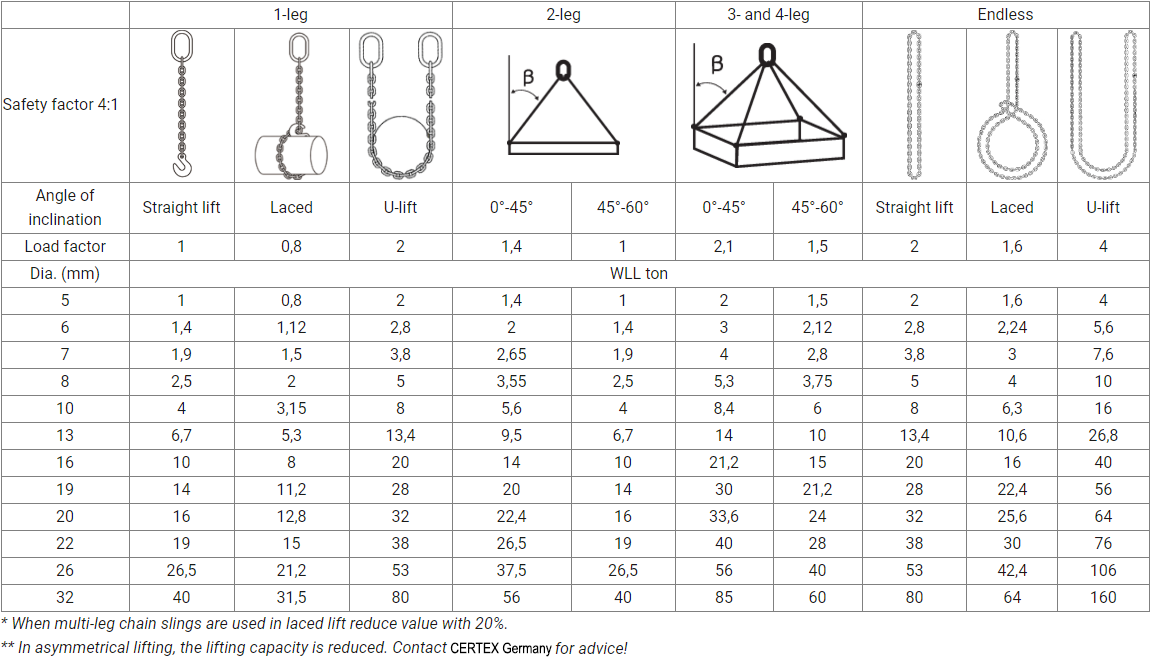How to calculate your Chain Sling correctly
To ensure safe lifting operations with your chain slings, it's essential to understand how the maximum load is influenced by factors such as tool dimensions and lifting angles. Below, we've compiled the necessary information to help you properly dimension your chain sling.
Load table for chain sling Grade 10
The table specify the maximum load for general chain dimensions in Grade 10 used for chain slings:

Calculation of working load limit (WLL) for chain slings
When the exact information about weight, lifting angle and position of the centre of gravity is known, you can calculate the working load limit using the trigonometric method as follows:
2-leg sling:
WLL (ton) = 2 x WLL for single leg sling x cos β
3- and 4-leg sling:
Note: If the load is uniformly on all 4 legs in a sling the following formula can be used in exceptional cases: WLL (ton) = 4 x WLL for single leg sling x cos β β = the legs angle against the vertical surface. In case of a multi-leg sling, the maximum load of the master link must be at least equal to that of the sling. In the case of 3- and 4-leg slings, the maximum load of the transition link of the top link must be at least 1.6 times the maximum load of the chain in question. In case of alternative dimensioning, the sling can be marked with the calculated maximum load for the angle in question.
WARNING! If the sling is to be used for a projected lift with a smaller lift angle (β) than 45° and thus a higher maximum load than the normal rated load, this must be communicated when ordering the sling.
Sharp edges
Edge protectors are essential to prevent sharp edges from causing damage to lifting equipment. As a general guideline, the radius (R) of the edge should exceed twice the chain diameter. When lifting directly on lugs with a chain, it's advisable to ensure that the lug diameter is greater than three times the pitch of the chain. If the lug diameter falls below this threshold, the Working Load Limit (WLL) must be decreased by 50%.
Do you want to learn more about chain slings?
Contact our experts or read more informative articles about chain slings.
